Zeta FX-61 Phantom Wing Number 2
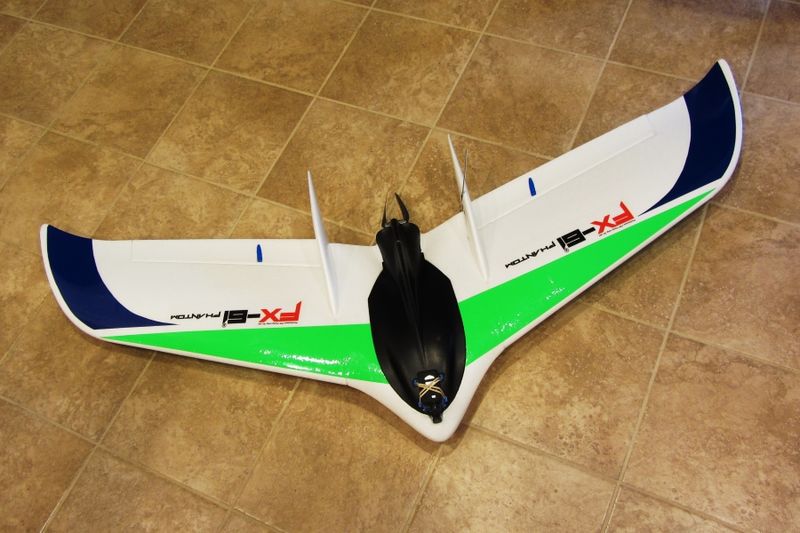
| |
| FX #2! |
Introduction - Phantom FX-61 Number 2
On this new build I have decided to go a lighter weight route and a swoopier (smoother) airframe in terms of add-ons like antennas, VTx's cameras etc. On the lighter side I am going to use a Cobra 2814/16-1050kv motor and an 4S/5200 Multistar (442g) or one of my 8 cell Panasonic 4S2P packs (405g). I am also going to try the Corona CS939MG 12.5g/2.5kg servos because I can't currently get Hitec HS-82MG so this also saves me about 12g as well. These three things plus not using a GoPro in its case are collectively 564g lighter than what I was flying on my first FX. AUW should then be close to 1600g which should make for an easy flyer!
On the swoopy side I am going to put the DL 433 dipole in one of the vertical stabilizers and let the lower element flop in the breeze. I have done this (flop in the breeze) on my MiniTalon and the range is still much more than I need. I will also print up a cover for the Mobius and FPV cam.
I will keep the servos on the bottom of the wing and use a servo arm cover to keep it safe from landings. I will use a limited amount of 3 mil laminate on the leading edge, wing tips and wing roots. I might add some monokote to the bottom to cover the spar and other gaps. I will print covers for the thumb/finger cutouts and the downward camera hole. All of this will make it much more slippery and lighter which will add to the flight time.
General Specifications
Distributor - BangGood USA
Aircraft - Zeta Phantom FX-61 FPV wing V1
Build Date - April, 2016
| Airframe Type - | Wing - FPV Specialist | Flying Type - | Powered FPV Glider | |
| Wingspan - | 61 inches (1550mm) | Length - | 27 inches (683mm) | |
| Wing Area - | 4.74 ft^2 (44dm^2) | All-Up Weight - | 58.4oz (1656g)** | |
| Motor - | Cobra 2814/16-1050kv | Wing Load - | 12.3 oz/ft^2 (38g/dm^2) | |
| Propeller - | 9 x 7 Aeronaut Folder | Max Motor Power - | 444 watts | |
| Static Thrust - | 47oz (1342g) @ 2550ft ASL | Static Thrust/Weight - | 0.81 | |
| Battery Type - | 4S1P Lipo | Capacity - | 5200mah/10C | |
| In flight efficiency - | 130-140mAh/mile | Flight Time - | Up to 50 minutes | |
| **Adjusted AUW (Sep 12, 2016) - | 1599g with 5200mAh/4S |
Wings
I started with the wings (again). The first task was to glue on the 0.5mm X 3mm CF strips on the trailing edge of the Elevons. This makes them very stiff and adds only 2.5g.
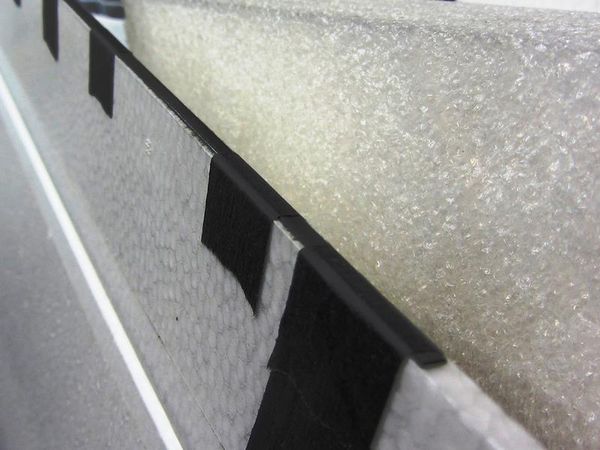
|
| Strip glued on with thinned 30 minute epoxy |
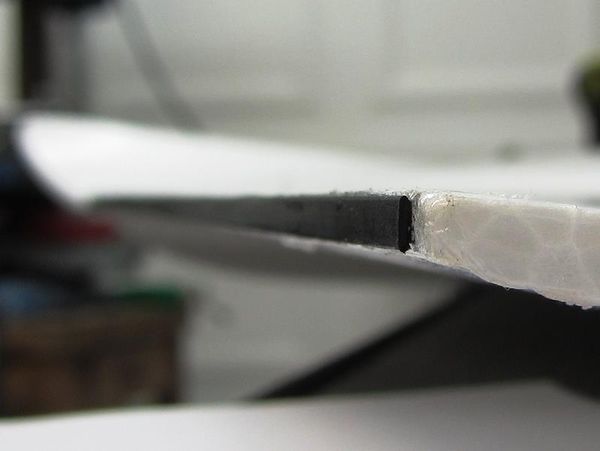
|
| CF strip profile |
I then printed up some mount pieces to be inlaid into the elevon foam for the purpose of making a stiff, solid mount for the control horn. Using a soldering iron with a flat tip I scoured out just enough foam to lay in the two pieces so they are perfectly flush with the top and bottom of the control surface.
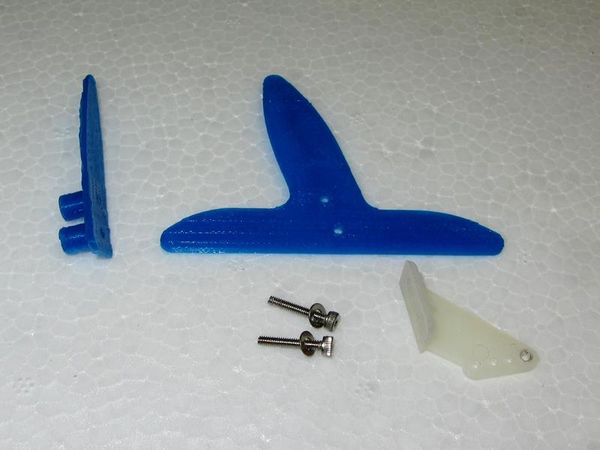
|
| Horn mount pieces |
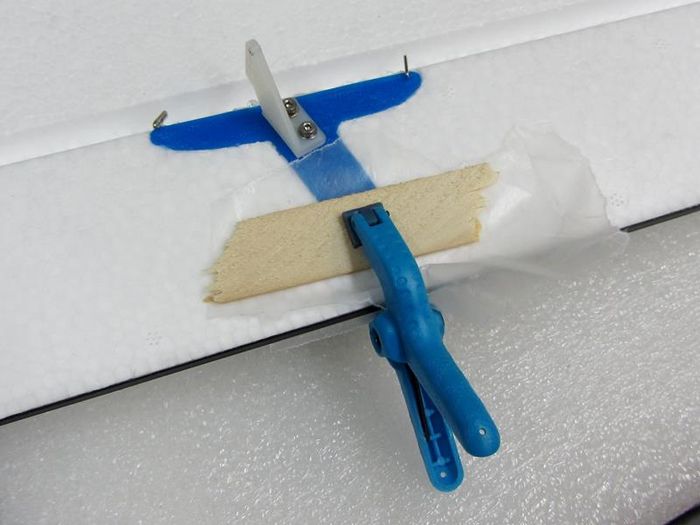
|
| Gluing it all up |
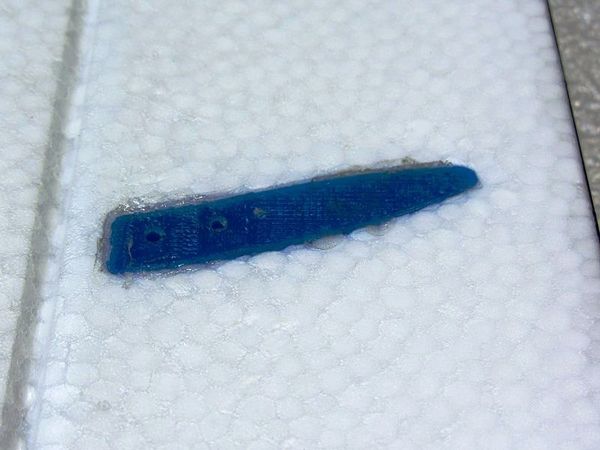
|
| Top view of threaded horn mount |
I then made up a pair of carbon fiber control rods and assembled it on the wing to get the length sizing correct. I also printed the servo covers which will be inlaid after the servo is completely set-up and glued in.
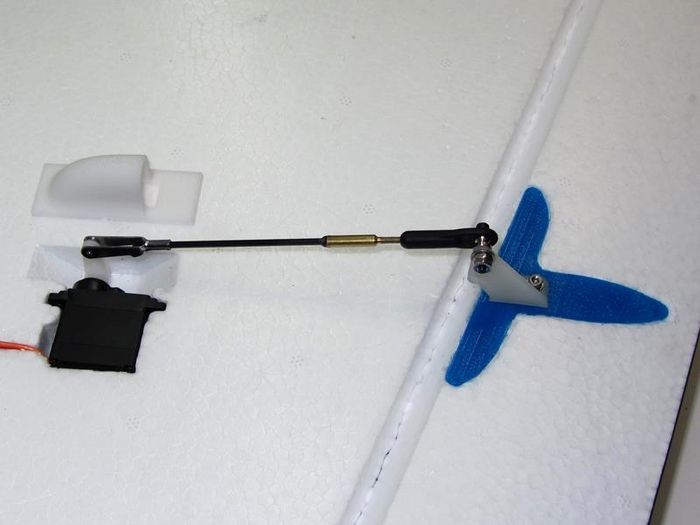
|
| Control linkage details |
Fuselage
This kit is a bit different from my first as this is version one (V1) which doesn't have the hardware for removable wings. For me this is non-issue as I had the first one glued and this one will be as well. The good news here is the v1 spar which is an 8mm fiberglass tube is 50g lighter than the v2 spar with all its extra pieces. I did decide to use the center tube section out of the v2 as this will make the whole wing significantly stiffer than a standard v1 and the weight penalty is only ~14g. So, the net weight savings is near 36g instead of the full 50g.
I decided to bury the DragonLink 433 Dipole antenna in the left vertical stabilizer to keep it off the wings. The bottom element hangs out the bottom about 30mm but this has only a very small effect on range. Also, this position will give me less component separation but still about the same as my MiniTalon which has no issue with range and it too has a dangling lower element.
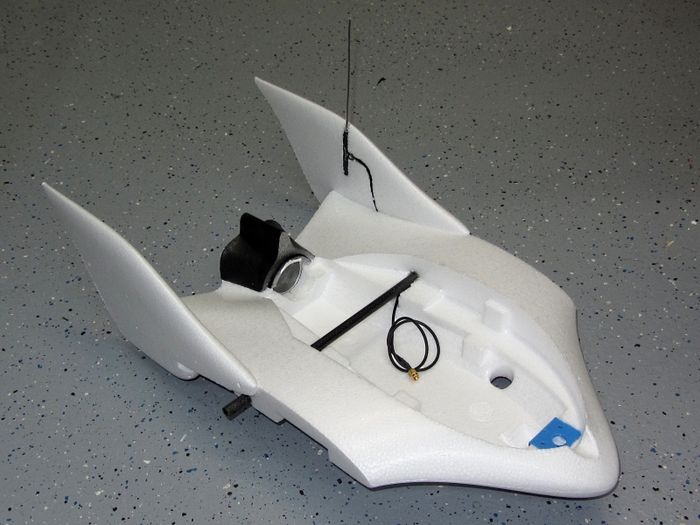
|
| Fuselage with 433 dipole, spar tube and FPV camera mount |
For a VTx mount I printed up a lightweight (7g) case with a screw down cover. This is then buried in the foam with a forward antenna (1.3G) which has about 16 inches of separation from the 433mhz RX antenna.
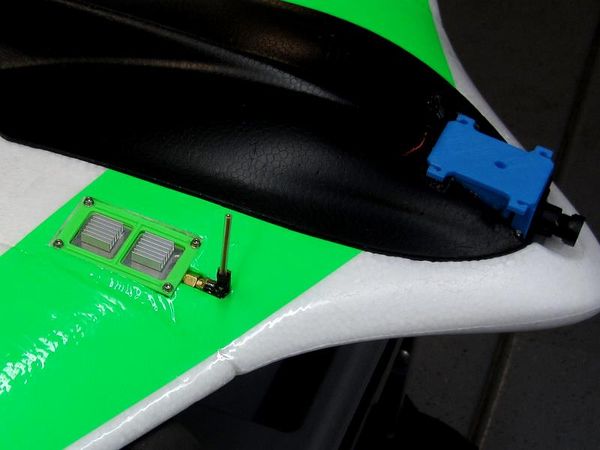
|
| VTx case with cover |
For landing protection I printed up a 2 piece PLA skid plate that is 1.2mm thick and conforms nicely to the fuse shape. Normally I would use Kevlar but I decided I should give something a bit harder a try and the weight penalty is only ~8g. I also am covering the grip holes to get the bottom a little more slippery. Since I only launch using the frisbee throw method, the grip holes aren't needed.
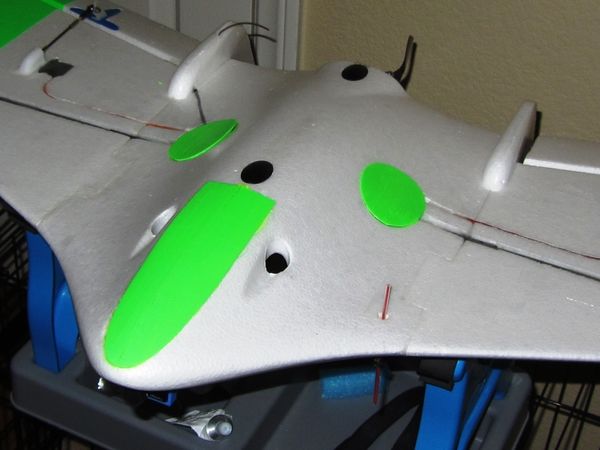
|
| Fitting skid plate and grip covers to fuselage bottom |
Canopy
For this version I decided to go with a Mobius instead of one of my GoPro's. This of course meant carving up the canopy a little. I started with a bolt on mount for the FPV camera (shown above) then added a deck piece to hold the Mobius and to act as a canopy hold-down. I may change this at a later date to a Mobius only to save more weight, I'm just not sure of the reliability.
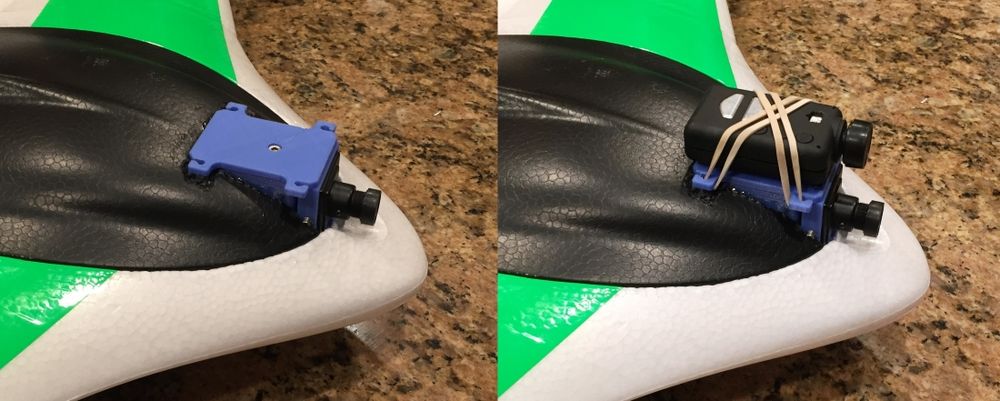
|
| Camera deck with and without the Mobius |
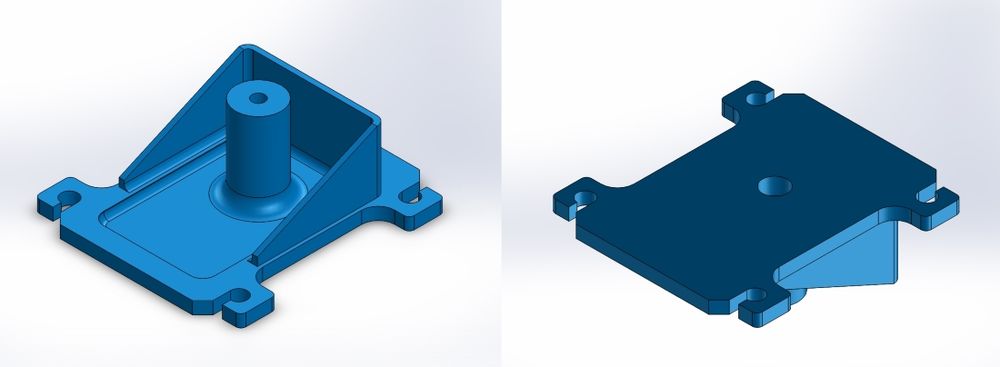
|
| 3D Model of the mount |
The rear of the Canopy is held down with some "tab and slot" printed bits. Basically these are two shaped tabs and two reinforced slots with anchors into the foam for strength.
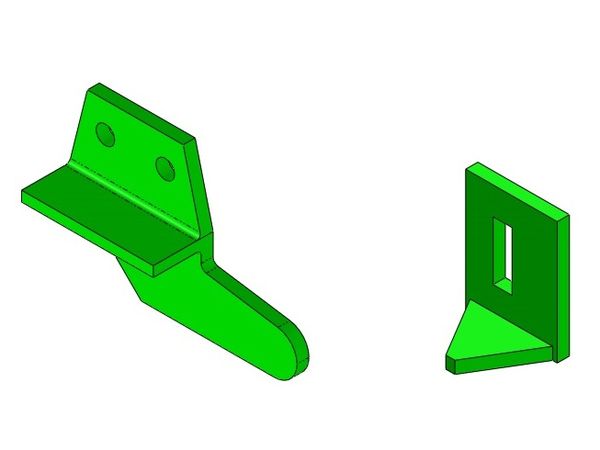
|
| Key and Slot pieces for the rear hold-down |
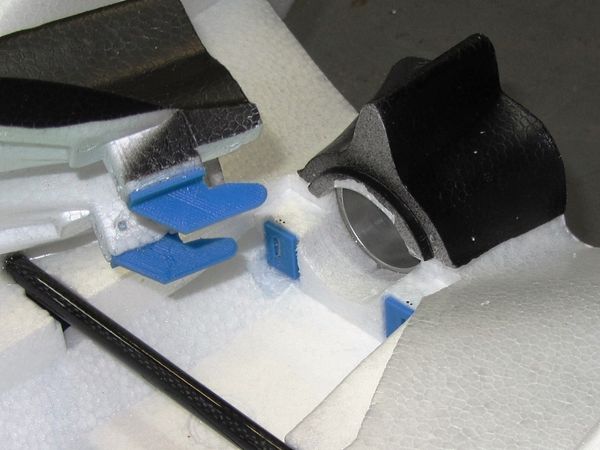
|
| Glued in with nylon pins for strength |
Graphics
Had to have some! First I layed on 3mil laminate on the leading edge wing joins and spar. I Had a roll of fluorescent green Monokote and piles of Navy blue Ultracote so I ironed some of this on to make it a little unique.

|
| Top and Bottom |
Component Layout
For this build I am going with a smaller pack and a more conventional layout. I printed up a folding flight controller mount to gain better access to the the battery strap. I also printed up two brackets to hold the ESC, Power Module and 12v Buck regulator.
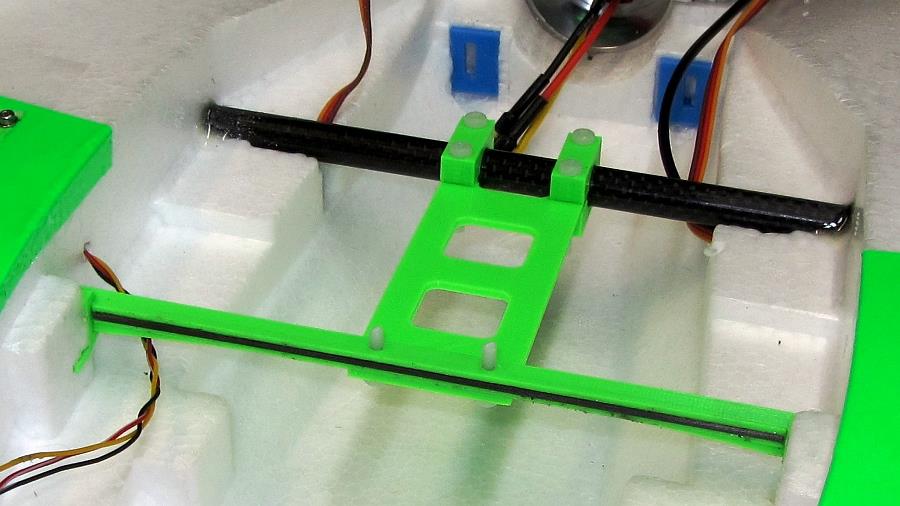
|
| New APM mount |
The APM mount is supported in the front by a tapered beam that has an inlayed 2mm CF rod to make it nice and stiff. I added some printed clips to each side so that it simply snaps into place.
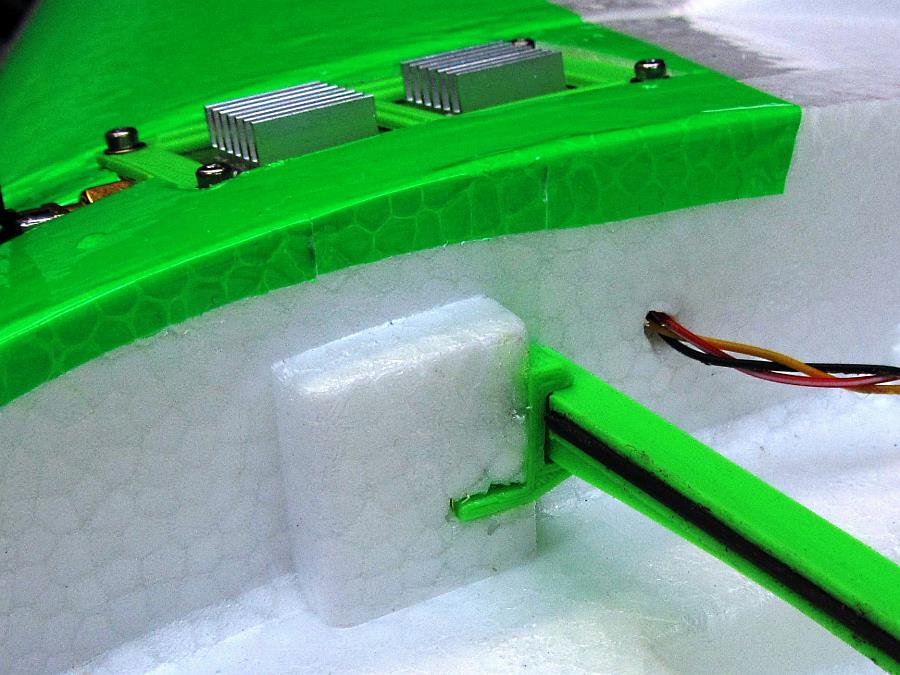
|
| Snap-in detail |
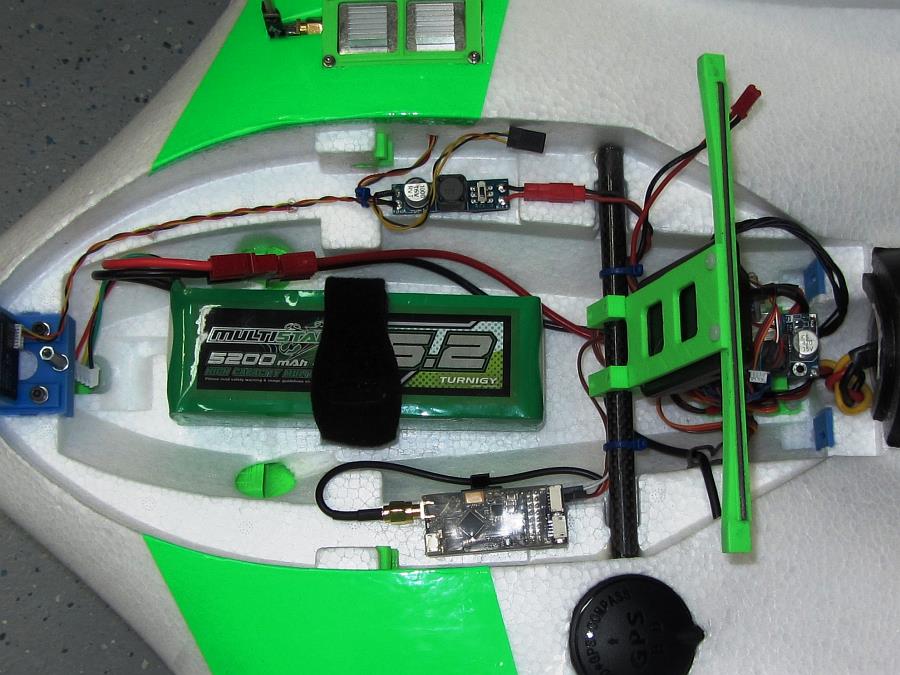
|
| APM mount opened up |
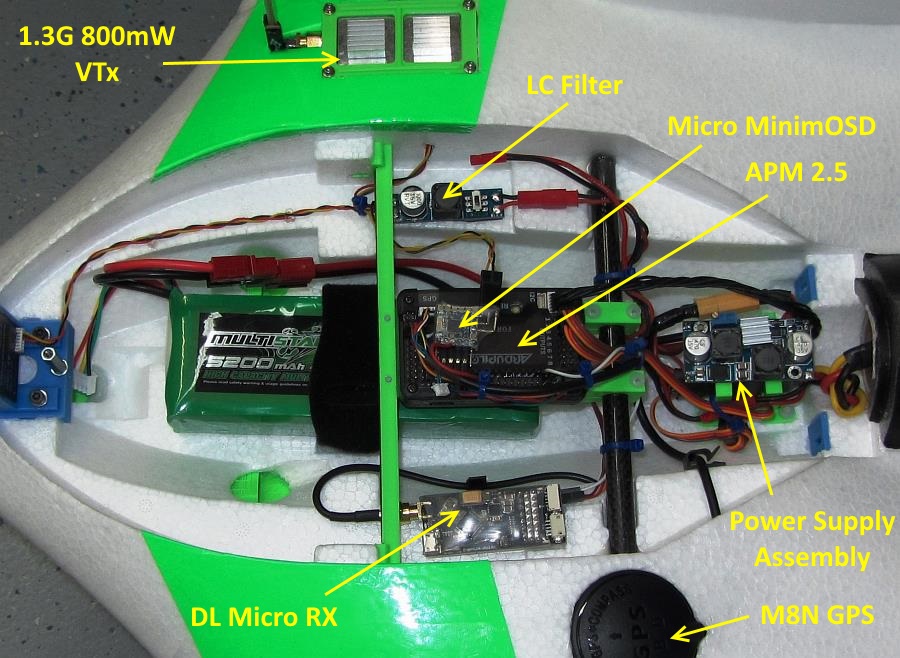
|
| APM Mount locked down |
Power Supply Assembly
For the power parts I created a pair of brackets which hold the Cobra ESC and APM power module vertically in front of the motor so they would get some air movement. I used servo tape to attach a 12v Buck regulator to the top of these two brackets then wired it all together.
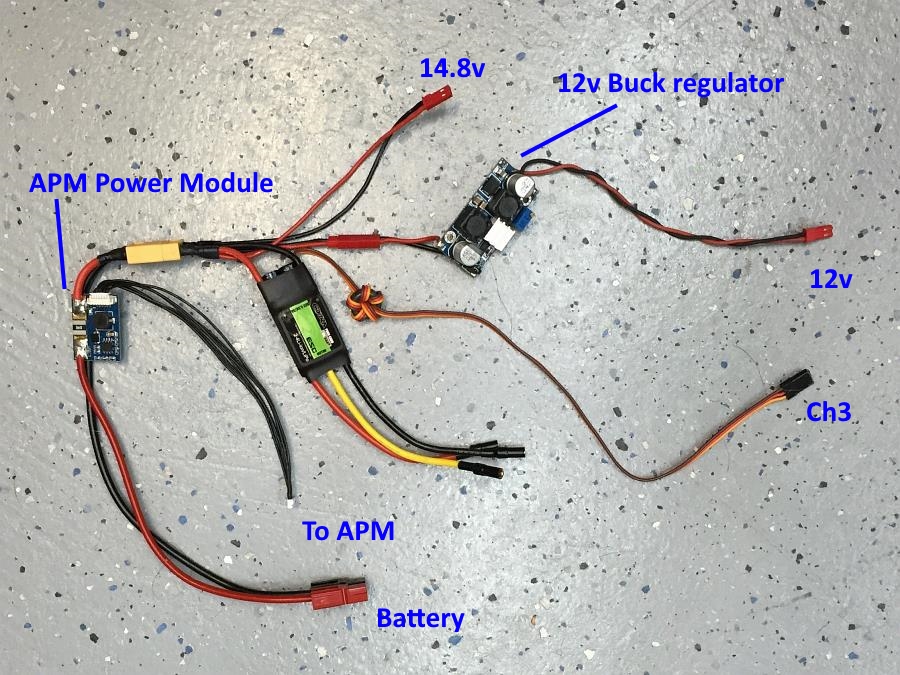
|
| Power supply components and wiring |
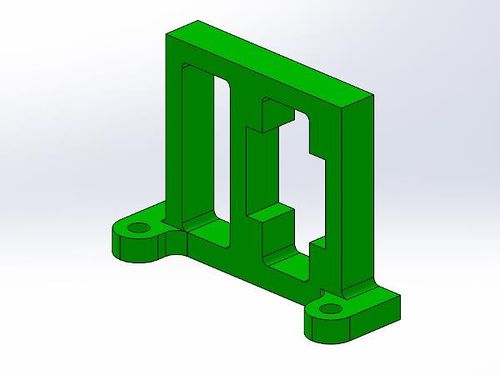
|
| Power supply bracket |
Bottom Bits
As mentioned, I printed up finger grip covers and a skid plate as well as a pair of NACA style duct covers to make the bottom more slippery.
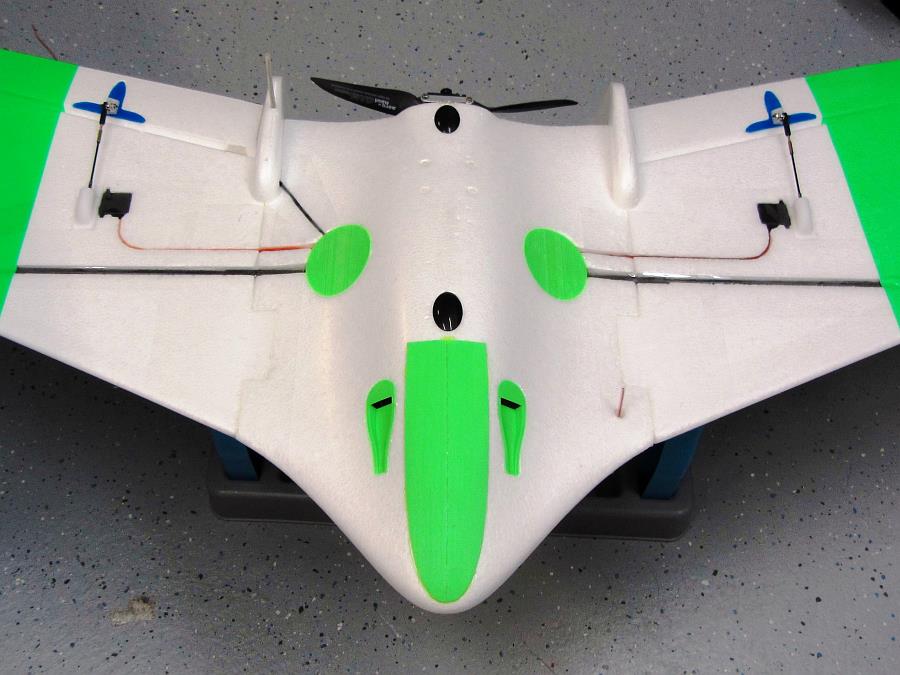
|
| Bottom details |
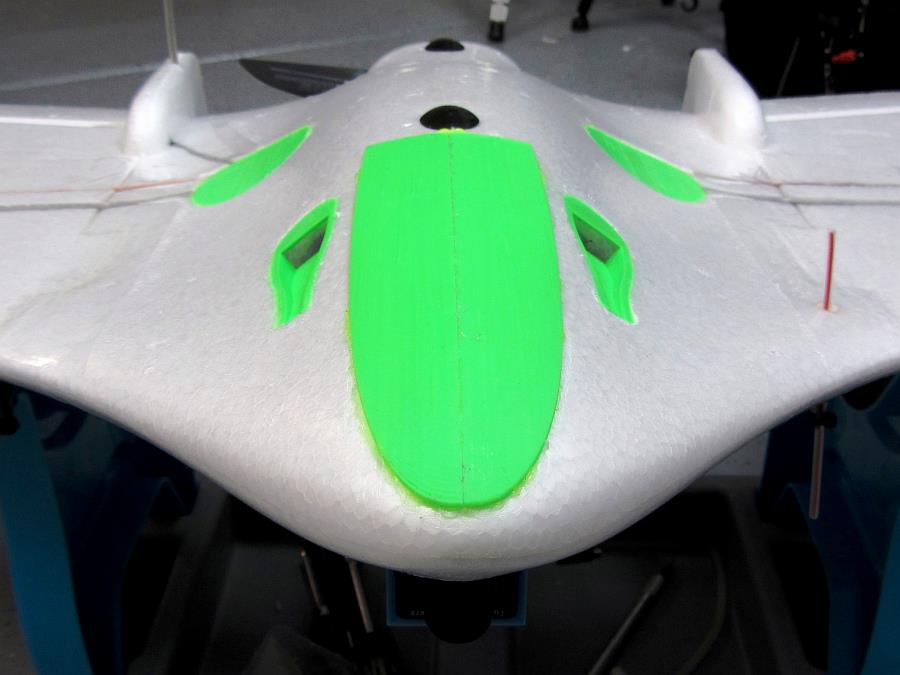
|
| Close-up showing skid plate, finger grip covers and NACA style ducts |
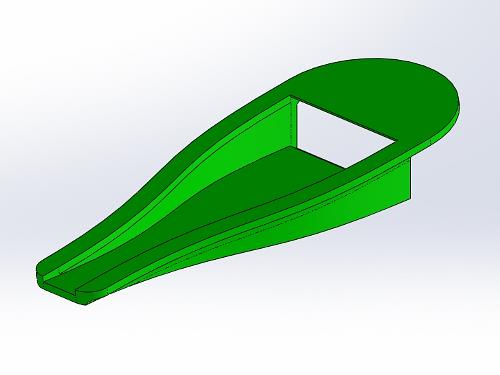
|
| CAD image of the NACA duct cover |
Motor and Prop
As I wrote in the intro I have decided to go a lighter route and use a smaller motor. The motor I've selected is a Cobra 2814/16-1050kv. I've slowly, over the years become a huge fan of these Innov8tive Design spec'd motors because of their very high build quality and wonderful smoothness. They have oversized shafts and enormous bearings and their continuous power ratings are truly "continuous", not "continuous (30s)" as some manufacturers like to post.
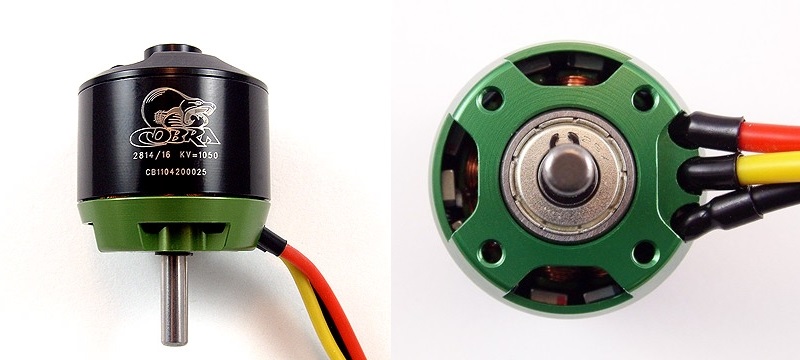
|
| The 2814/16-1050kv motor |
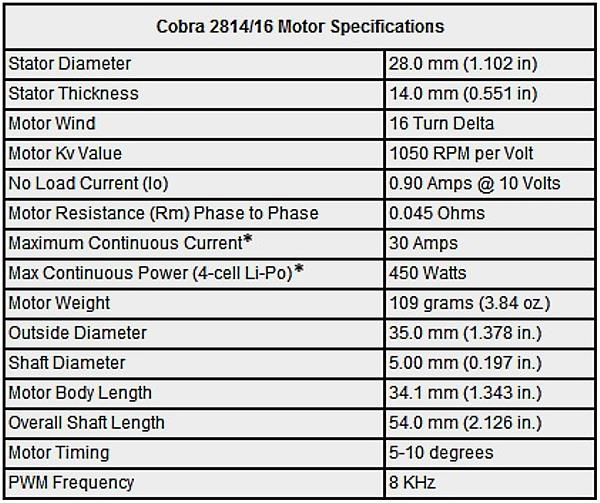
|
Below are some prop tests using this motor with some of the more popular FX61 props. I will start with an old favorite, a 9.5x6 Aeronaut.
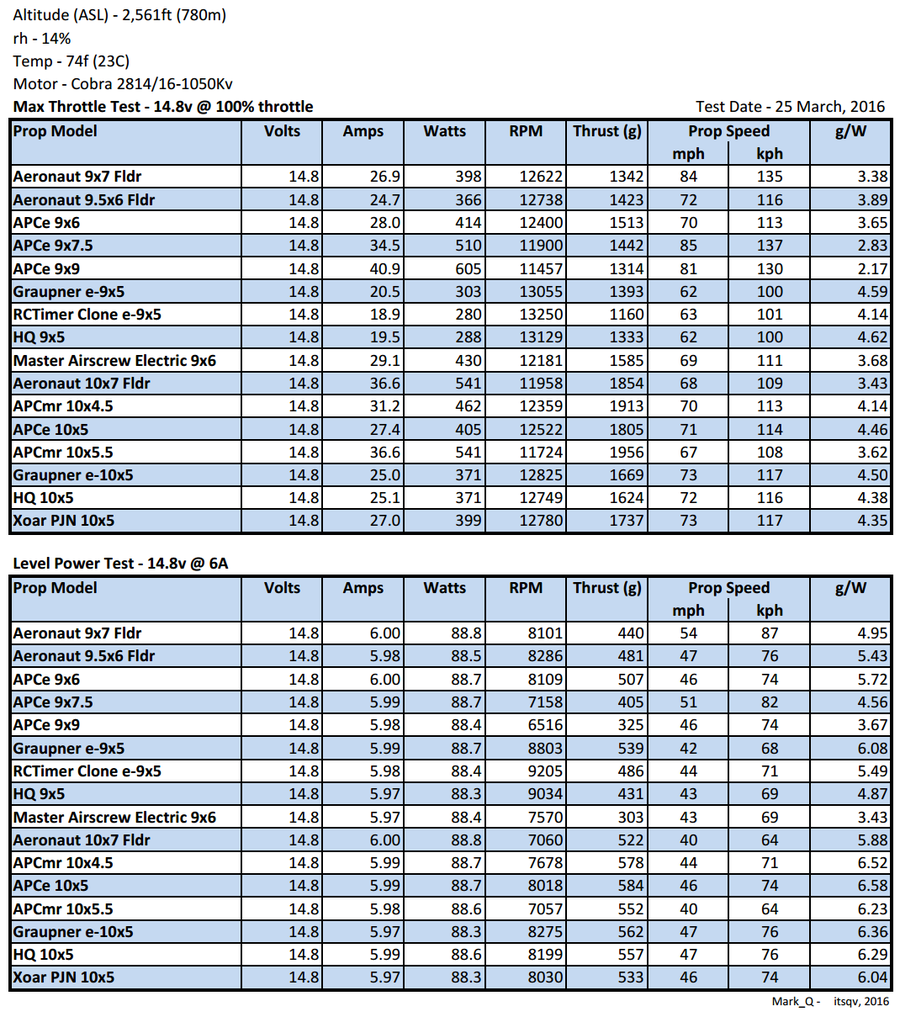
|
| Cobra prop tests |
More Mods, Changes and Add-Ons
One thing I added is a collapsible tow hook similar to the one I had on my first Phantom. I did this (pre-maiden) because of the fine video from BillHally on "Programming RC Plane Auto Launch on an Frsky Taranis" which is on his YouTube channel. The part, fully assembled weighs ~9g so it wasn't a big add.This print has been added to the print files package (next section).
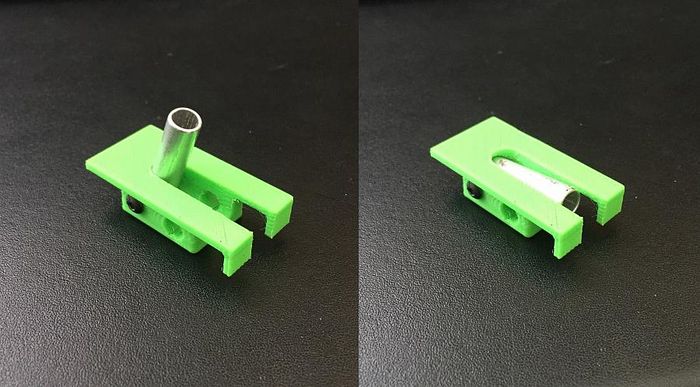
|
| Printed and assembled tow hook |
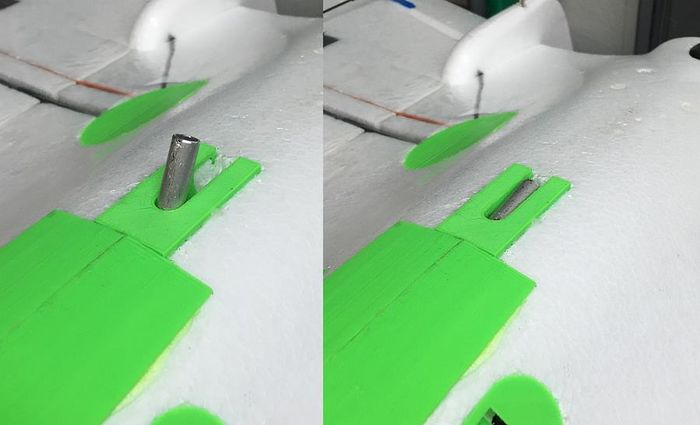
|
| Added to the bottom |
See Also
Project 3D Print Files
Print weights are totals for all required pieces using PLA and an infill of ~40%.
Servo cover 4.10g Servo Arm mount 4.90g Mobius mount 10.64g Front Canopy bracket 3.86g FPV Cam Mount (30mm) 3.50g Rear Canopy tabs 4.38g Vtx Case 6.91g Skid Plate 14.98g Finger Hole covers 8.74g NACA Duct Covers 5.14g APM Mount Assembly 15.23g Power Supply Brackets 6.80g Tow Hook Assembly 9.80g Total print weight 89.50g
Complete print file package download (2mb) - FX2 Print Package
Some Vendors used for this Project
Comments? Questions?